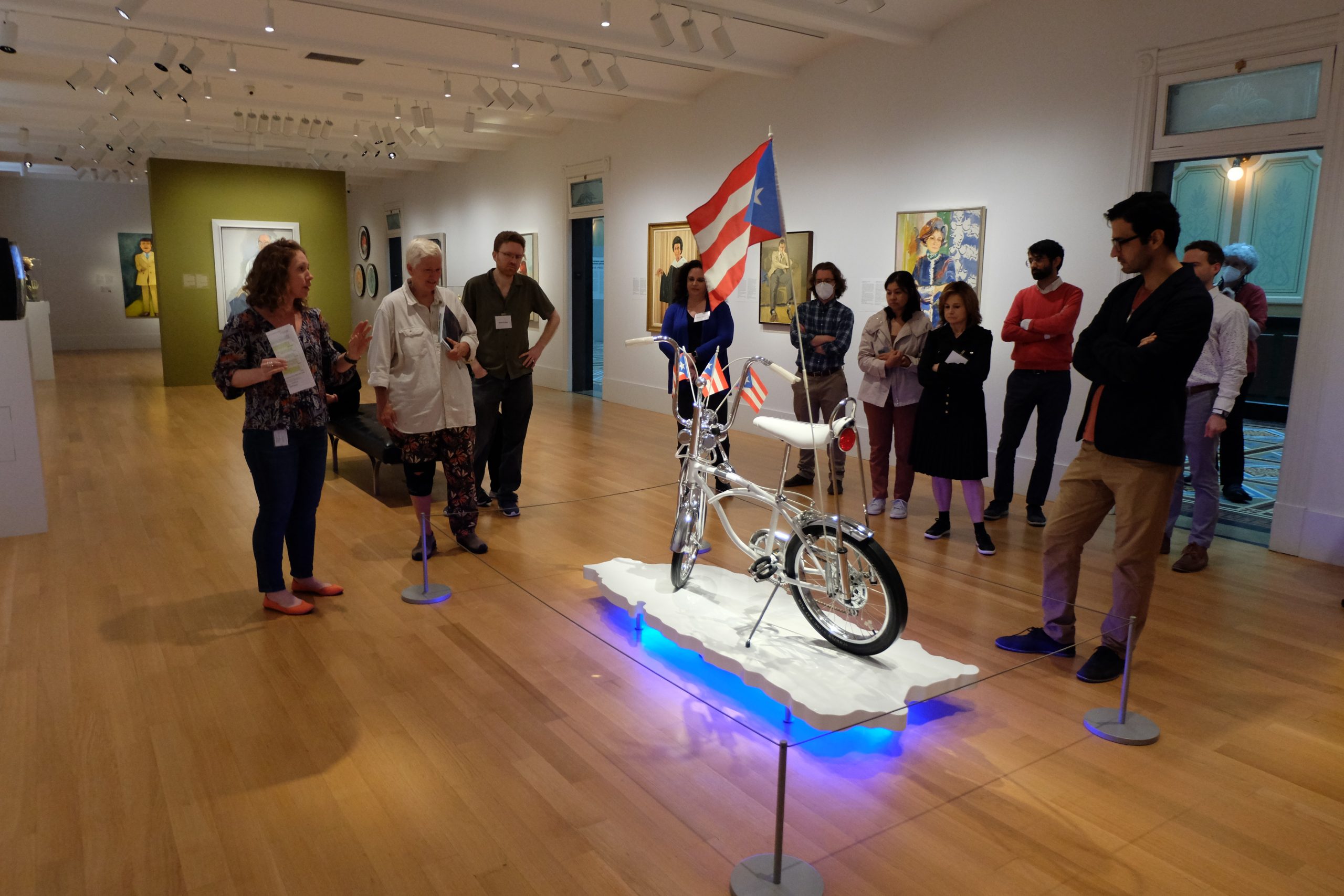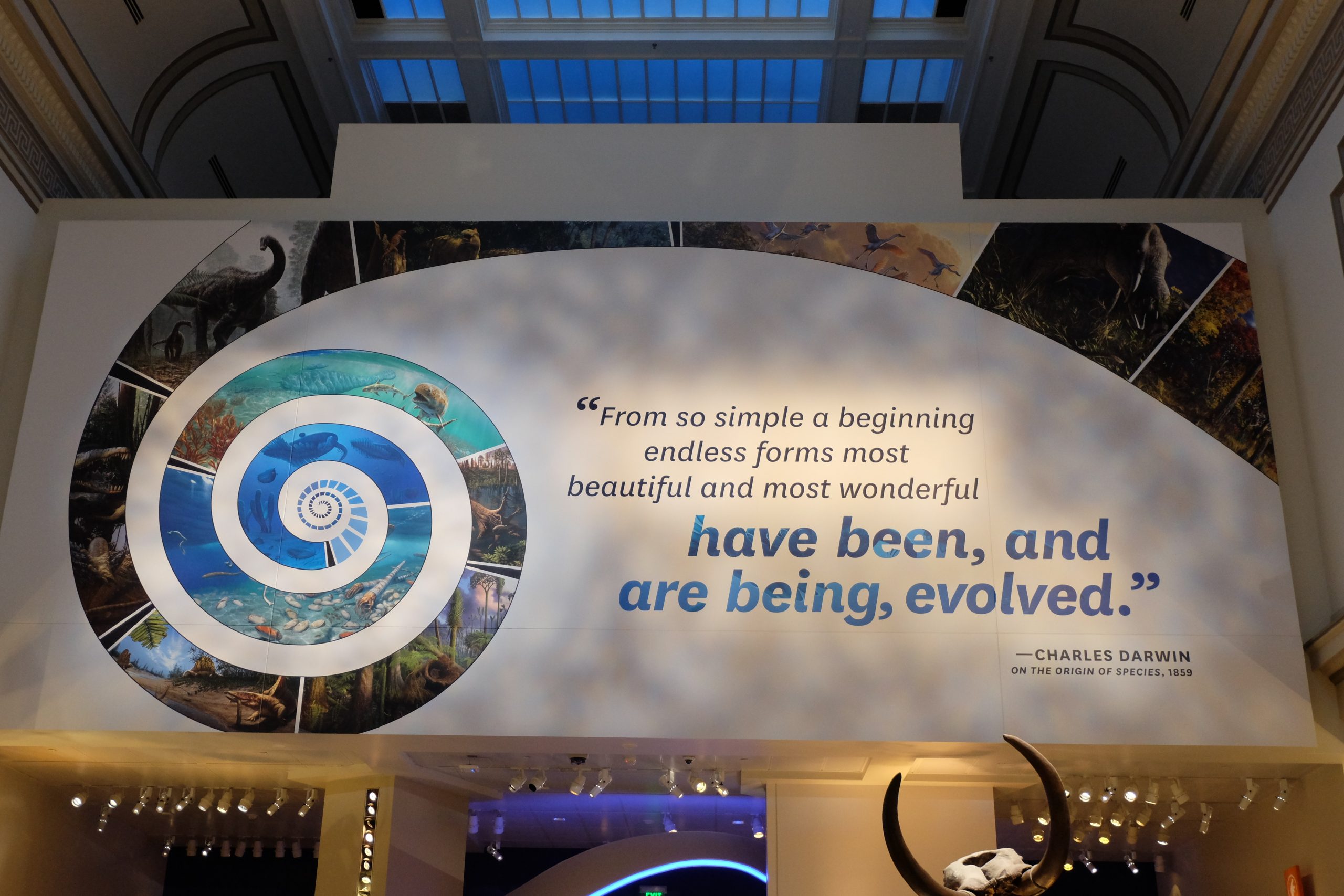As soon as the Smithsonian Faculty Fellowship cohort arrived at the Donald W. Reynolds Center…
One of the highlights of the Fellowship is the Opening Panel which kicks of our museum seminar series each year. With the continuing Covid-19 related restrictions we are continuing with remote presentations. While we would have liked to have been in person, the quality of the afternoon’s presentations was outstanding.
Following a warm welcome to the 2021 Fellows from Philippa Rappaport, Community Engagement Programs Manager, Smithsonian Center for Learning and Digital Access (SCLDA), and introductions from the Fellows, the afternoon began with a presentation by Dr. Ashley Peery, Educator for Outbreak: Epidemics in a Connected World, an exhibition about emerging infectious disease. This exhibit, located at the Smithsonian’s Natural History Museum (NMNH) opened in 2018, coinciding with the 100th anniversary of the pandemic of 1918. The exhibit, with its theme of “One World, One Health”, demonstrates how humans, animals and the environment are all connected in ways that allow zoonotic viruses to move among species. Stories of previous epidemics are told through science, personal stories and objects, allowing visitors to see these interconnections. Successes are also documented as the exhibit addresses ways that human response can alter the course of any one virus, and the kinds of creative scientific inquiry that can lead to these changes.
Kerri Dean, Exhibitions Assistant and the Do-It-Yourself Project Manager at t NMNH followed with her presentation, “Beyond Museum Walls”, which allows the One Health message to move beyond the confines of the museum. The Smithsonian has developed a free, printable panel version of the Outbreak exhibit that has already been used in a number of countries around the globe. Panels can be printed in various sizes, allowing for installation in multiple types of sites. Translated into a number of languages including Spanish, Arabic, French, Chinese, Vietnamese, Indonesian, Hindu, Swahili and Portuguese this DIY exhibit has been installed in settings as diverse as a community center in the Democratic Republic of the Congo, a beach in Brazil, a science center in Finland and an outdoor setting in Yemen as well as in libraries, hospitals and universities throughout the United States.
Our next presenter was Ellen Lupton, Senior Curator of Contemporary Design at Cooper Hewitt, Smithsonian Design Museum in New York City. Her presentation, “Design for Everybody: Creative Ideas for Wellness and Inclusion” examined the following questions: How do products, devices, and environments affect our wellbeing? What is the human side of visiting a hospital—or working in one? What do museums and health care facilities have in common? How are designers and clinicians redesigning care in the age of COVID-19? Health design thinking was a new concept for many in attendance. The focus of health design thinking is to apply the principles of human-centered design to real-world health care challenges. Researchers use techniques such as interviews, observations, diagrams, storytelling, and role playing as this approach focuses on actual problems faced by patients and health care workers over technology. Examples provided resonated with the group and they began to see ways in which this thinking could be incorporated into work with their own students.
The afternoon’s last presenter was Dr. Katrina Pagenkopp Lohan, a Senior Scientist and head of the Marine Disease Ecology Laboratory at the Smithsonian Environmental Research Center (SERC), who shared her presentation, “Are Parasites always Bad?” The term parasitism defines a complex, intimate interaction between a host and a parasite, where the parasite causes some level of harm to the host. Dr. Lohan noted that while parasites are often defined by their negative impact on their hosts, they also play critically important roles in populations and communities. In order to conserve ecosystems on which humans depend, it is critical that we gain an understanding of these interactions an how they might change. In turn, this will give us the knowledge needed to mitigate the more severe impacts of parasites. She shared information on ongoing SERC research, and we were reminded that our hope is to visit SERC as a group when conditions permit.
The afternoon’s presentations were supplemented by a rich collection of resources curated by Philippa and available to Fellows through the Smithsonian’s Digital Learning Lab.
The afternoon was a wonderful start to our 2021 Museum Seminar Series, leaving all eager for what would be shared in the weeks to come.





This Post Has 0 Comments